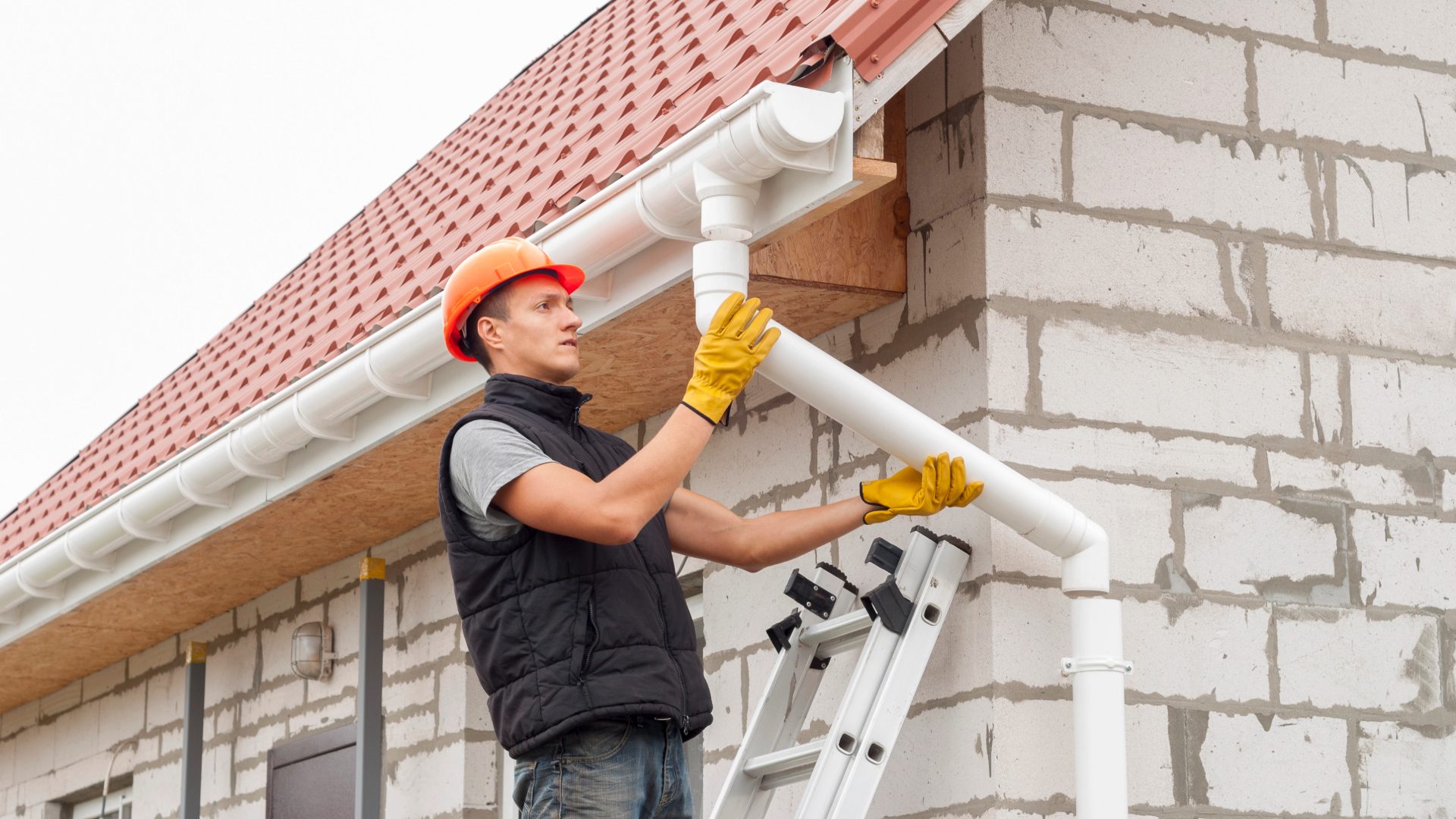It’s a peaceful Sunday afternoon until you hear it. That distinctive waterfall sound coming from the side of your house during a rainstorm. That’s your gutter giving up on life right before your eyes, and just like that, your weekend plans are suddenly replaced with an emergency home repair project.
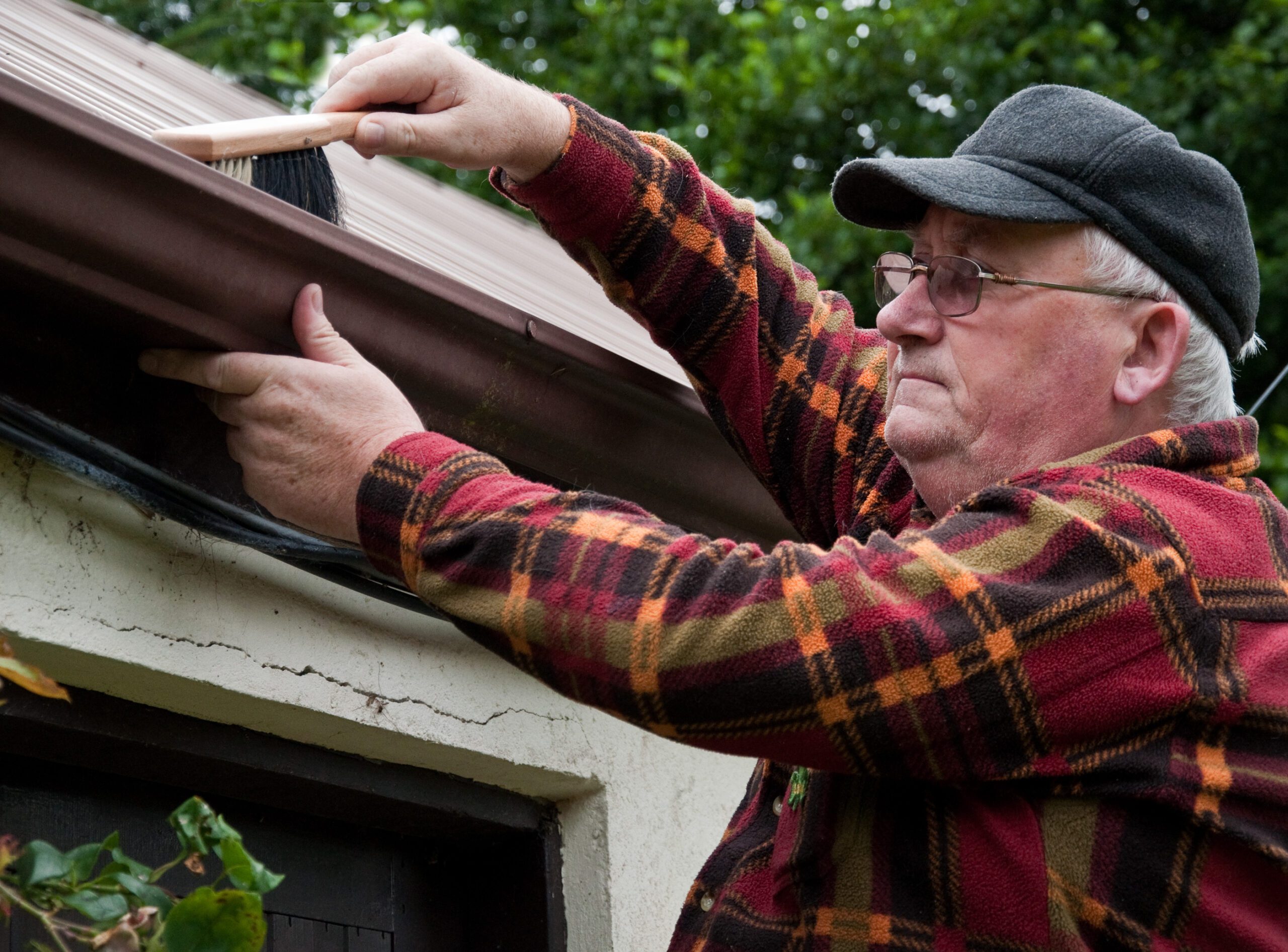
💧 Why Your Gutters Actually Matter (More Than You Think)
Most homeowners rarely think about their gutters until something goes wrong – they’re kind of like your home’s unsung heroes, working quietly until there’s an emergency. But your rain gutters aren’t just decorative trim for your roofline. They’re your home’s first defense against water damage.
When working properly, gutters direct rainwater away from your foundation, preventing the expensive structural issues that water damage can cause. They protect your siding, prevent basement flooding, and save you from costly repairs that make gutter maintenance look like pocket change.
But when gutters fail? Water becomes your home’s enemy, causing everything from roof leaks to mold growth. Minor gutter issues might seem manageable today, but they’re tomorrow’s major headaches.
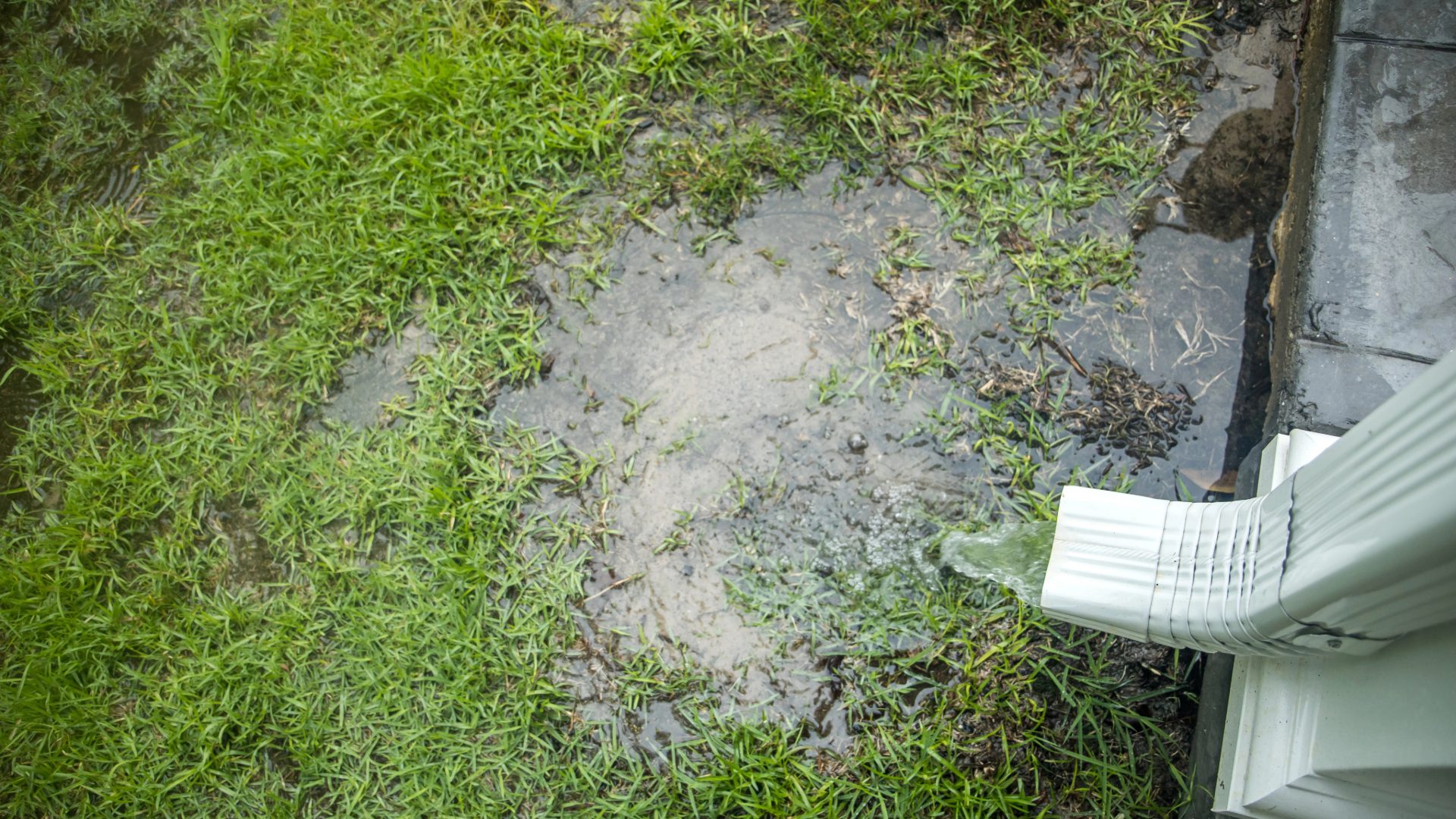
⚠️ Signs Your Gutters Need Attention
Your gutters may not have a voice, but they certainly have ways of telling you they’re unhappy.
Are Your Gutters Crying Out for Help?
How do you know when it’s time to address gutter problems? Watch for these warning signals:
- Sagging sections that hang lower than the rest of the gutter line
- Overflowing gutters during rainstorms (water should never cascade over the front lip)
- Water stains on siding beneath gutter seams
- Eroded soil or damaged landscaping under the gutters
- Peeling paint or rust spots on or below gutters
- Water collecting near your foundation
- Gutter seams pulling apart at slip joints
- Loose brackets or hangers that have detached from the fascia board of your roof
Spotting these common problems early can save you thousands in potential water damage.
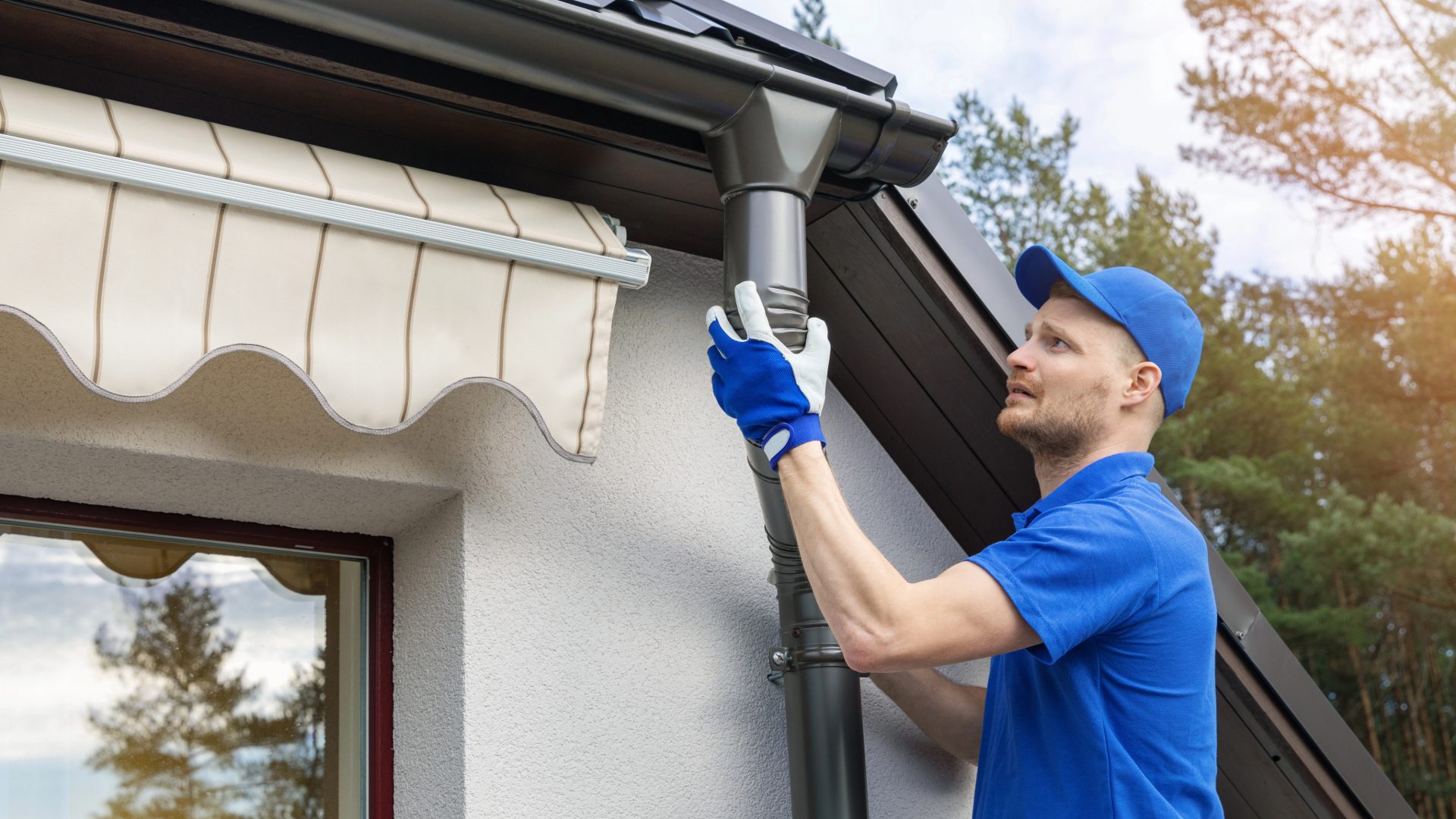
🔧 The Replacement Question: Repair vs. Replace
At some point, a temporary fix like patching your gutter system becomes like putting band-aids on a broken arm – you’re technically addressing the issue, but you’re not solving the problem.
Signs it’s time for a complete gutter replacement include:
- Multiple leaking sections
- Extensive rust
- Gutters pulling away from the house
- Frequent clogs from leaves and other debris despite regular cleaning
- Visible sagging
- Water damage to fascia boards or roof edge
Modern options like seamless gutters eliminate many common problems by removing seams along runs.
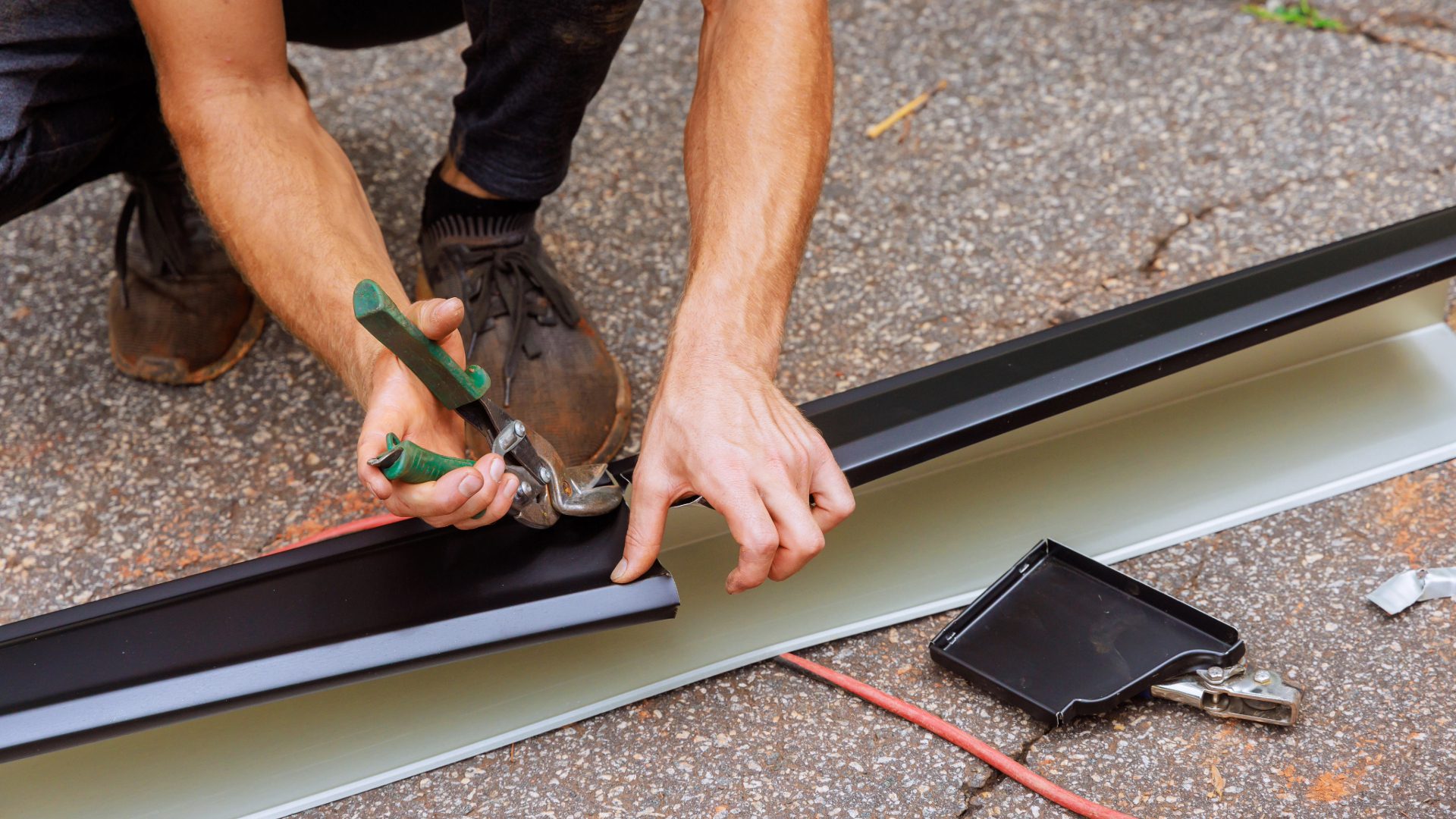
🛠️ The Tools You’ll Need Before You Climb That Ladder
Before you embark on your DIY gutter adventure, prepare for at least two trips to the hardware store for items you may not have even known existed last week.
The DIY Shopping List
Considering a DIY approach? First, take a look at this shopping list of essentials:
- Extension ladder with stabilizers
- Work gloves (to protect against sharp metal edges)
- Garden hose (for testing water flow after work)
- Gutter sealant or caulk (silicone-based works best for a proper seal)
- Putty knife (for removing old sealant or debris)
- Drill with bits (for securing loose brackets with screws)
- Replacement gutter hangers or brackets
- Tin snips (if you need to cut sections)
- Level (to check for proper slope)
- A bucket for collecting debris
Safety first: Always have someone spot you on the ladder, and never lean out farther than is safe. Professional specialists bring not only all these tools but also years of experience working safely at heights.
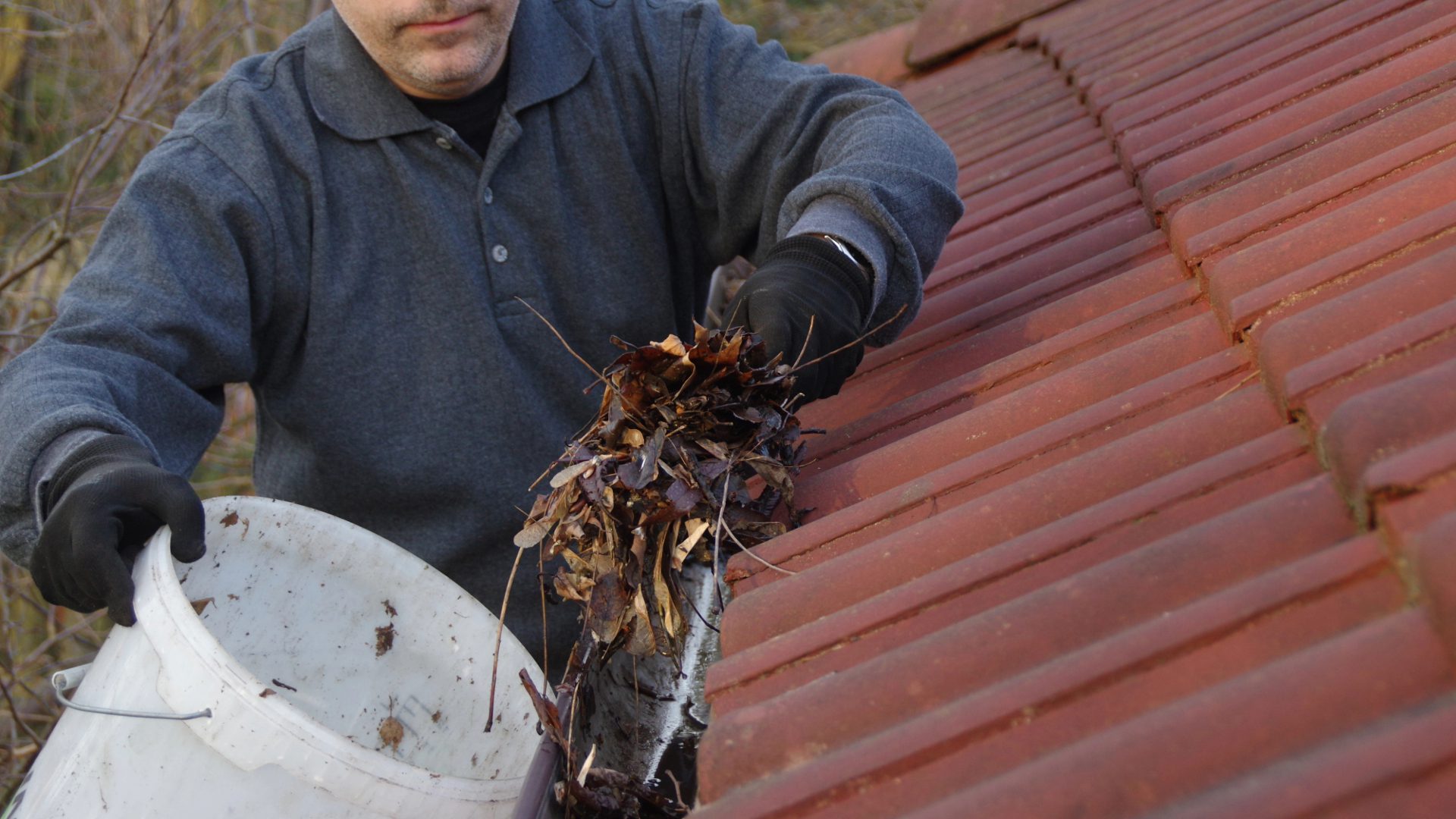
🧹 The Dirt on Cleaning: The First Step to Any Successful Project
Cleaning gutters is like opening a time capsule of everything that’s blown through your neighborhood in the past six months (or more, we’re not judging!).
The Science Experiment Living In Your System
Before you can address any issues, you need to see what you’re working with. That means clearing out all the debris buildup that’s been collecting.
Start by removing debris by hand, working in sections along the entire length. Use the putty knife to loosen compacted material. Once the large items are gone, flush with a garden hose to ensure water flows freely.
Pay special attention to downspouts – they’re often the site of stubborn clogs that can require disassembling multiple sections. If water backs up, try feeding the hose up from the bottom of the downspout or using a plumber’s snake to break up the clog.
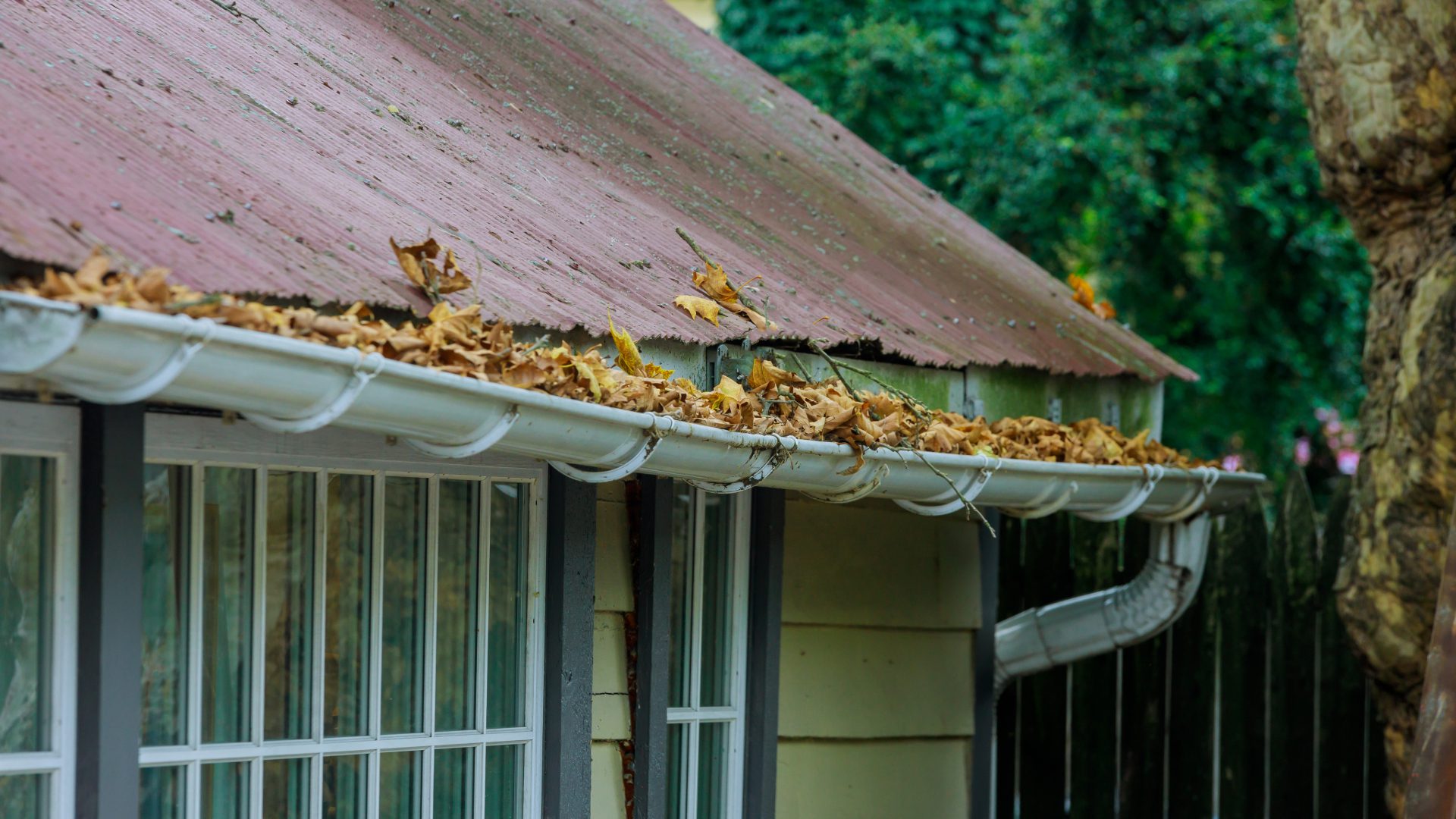
📐 When Sagging Gutters Make Your House Look Sad
Sagging gutters are the architectural equivalent of bad posture – they make your whole house look tired while secretly causing damage you can’t see from the ground.
The Gravity Problem No One Wants
Sagging gutters not only look terrible, but they also create pools of standing water that lead to more damage. The culprit is usually loose or damaged brackets. These should be spaced every 18-24 inches along the gutter. If they’ve pulled away from the fascia board or broken off your roof altogether, the water weight will pull the gutter down over time.
The Not-So-Simple Fix
Think addressing sagging gutters is just a matter of tightening a few screws? The process gets complicated quickly:
- Remove all debris to lighten the load
- Identify and purchase the correct type of replacement brackets
- Remove old, rusted hardware without damaging the system
- Add additional hangers in problem areas
- Make sure screws are securely attached to solid fascia (not rotted wood)
- Ensure the proper slope is maintained along the entire run
What starts as a simple bracket replacement often reveals that the fascia board itself is damaged. Now, you’re looking at wood replacement before starting the gutter work.
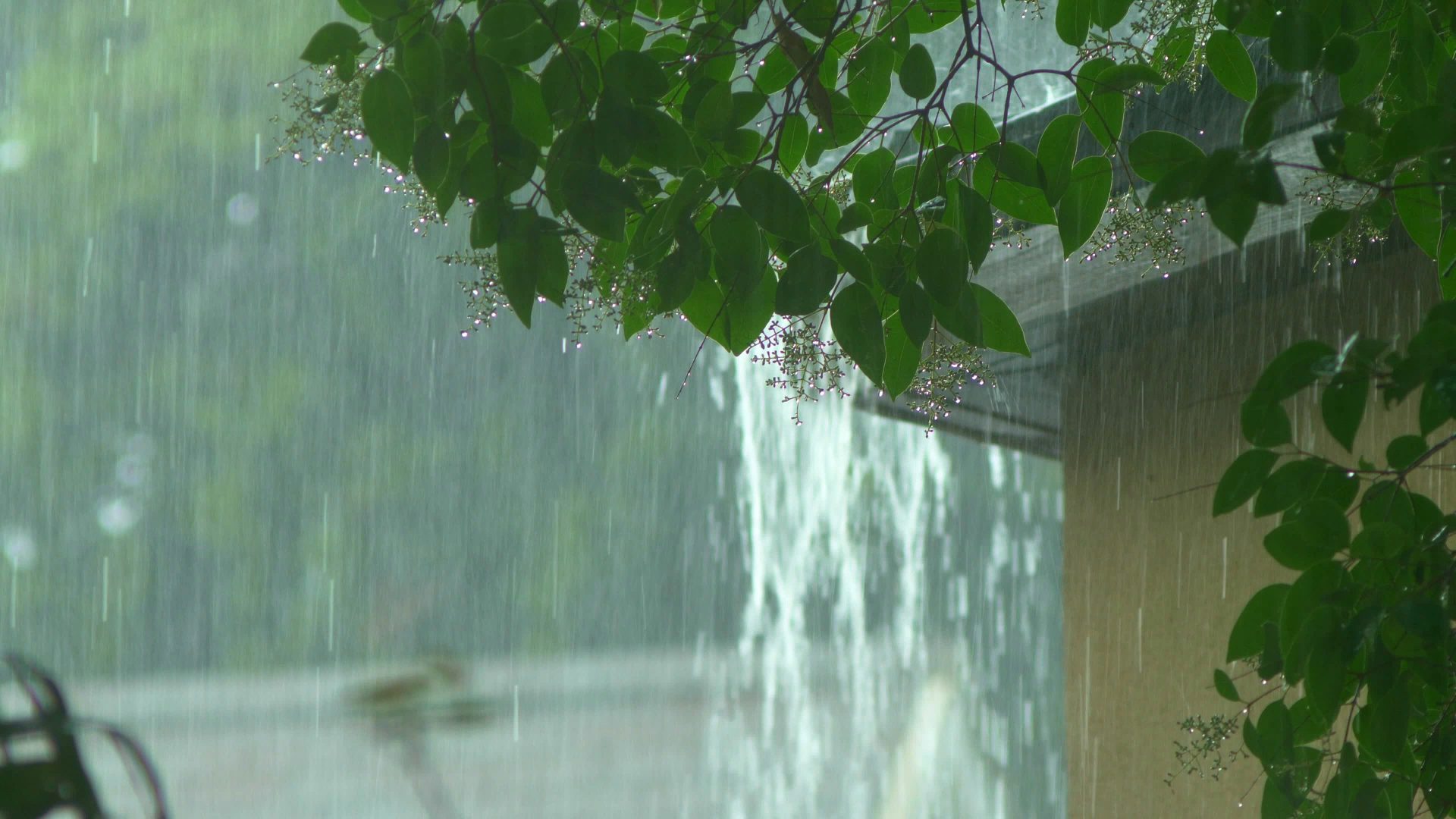
💦 Leaks at the Seams: Where Water Finds Its Way Out
Those persistent drips from gutter seams can feel like water torture for your home’s exterior – annoying initially, but eventually, they’ll cause real structural damage.
Sealing the Deal
To address leaks, first, make sure the gutter sections are properly aligned at slip joints. Clean the area thoroughly and allow it to dry completely. Old sealant may need to be removed with a putty knife before applying new material.
Next, apply a high-quality sealant along the inside of the joint. Silicone-based sealants provide the best waterproof barrier and flexibility to handle expansion and contraction.
For persistent leaks, you might want to replace the section entirely. Investing in seamless gutters for your roof will eliminate the problem of seam leaks altogether.
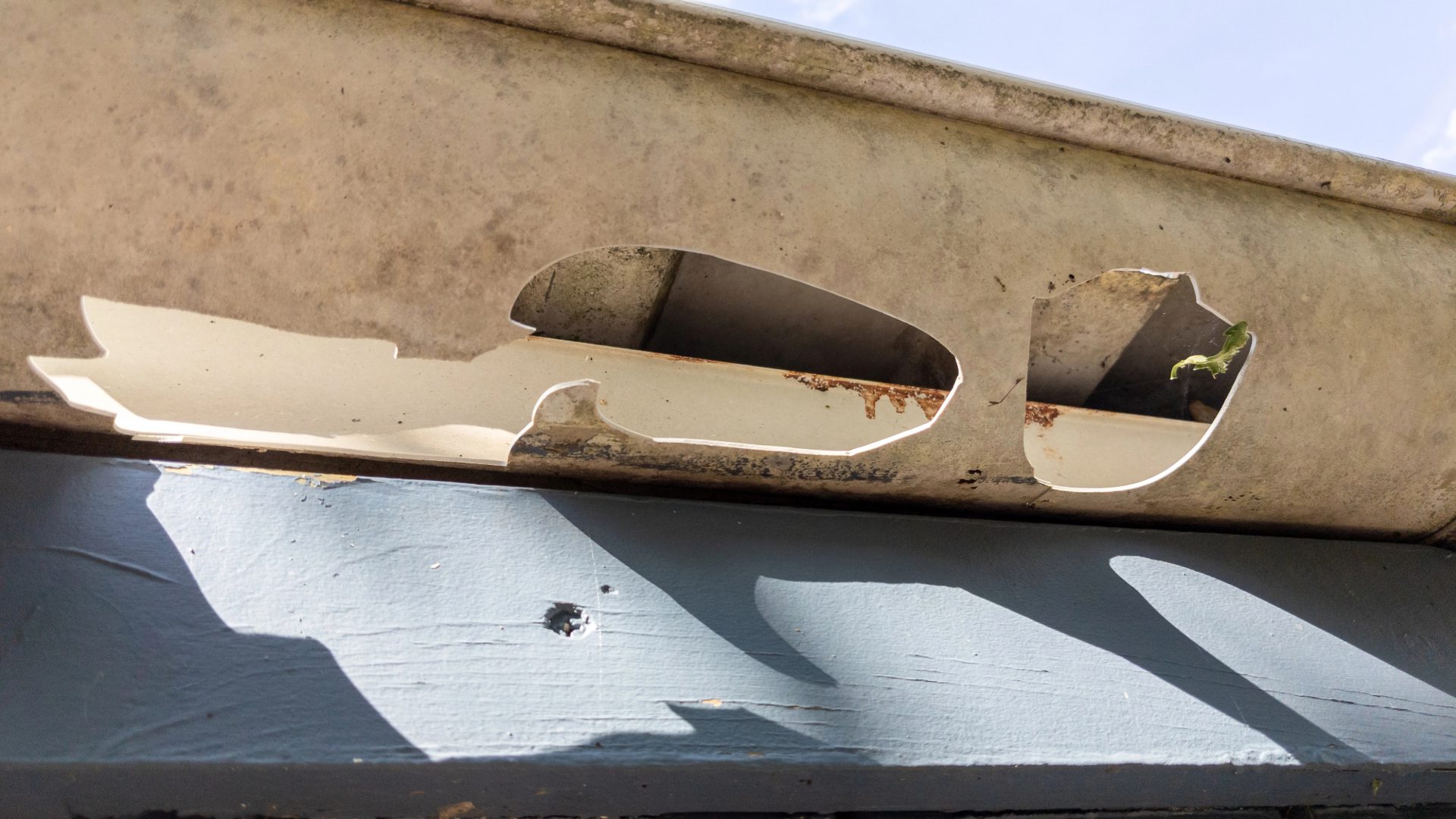
🕳️ Dealing with Punctures and Cracks
Even tiny holes in your gutters or downspouts can create impressive water displays during heavy Michigan downpours.
Patching It Up Right
To address cracks or small holes (less than ¼ inch), you’ll need to clean the area thoroughly and apply sealant designed specifically for gutters. For larger holes, you may need a metal patch.
To address a small hole:
- Clean and dry the area completely
- Sand any rust around the hole
- Apply a thin layer of sealant over and around the hole
- Allow to dry completely before testing
For larger damage, metal flashing cut slightly larger than the damaged area can be secured with rivets and sealed with sealant. This creates a waterproof patch that should last for years.
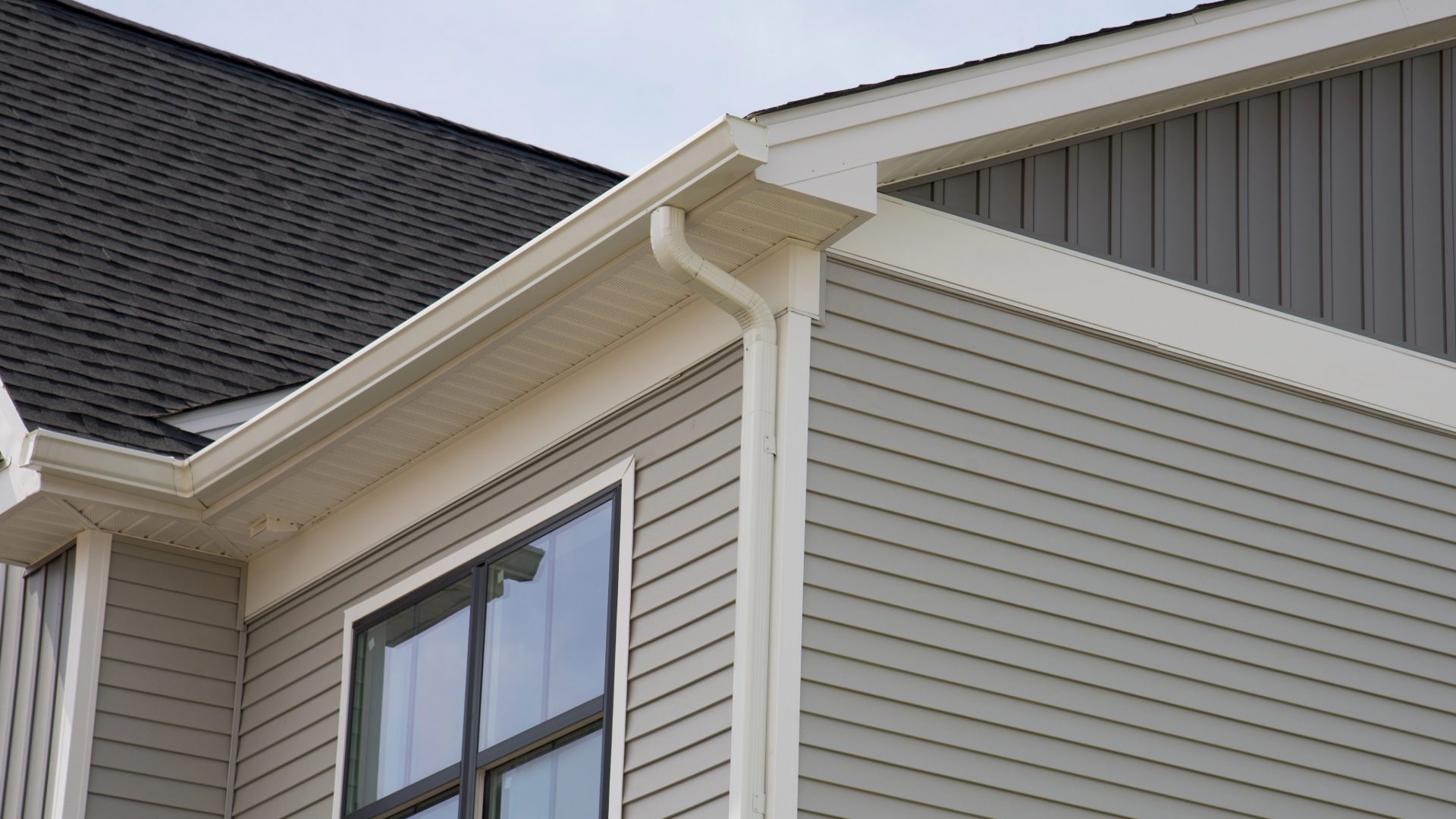
📏 The Slope Situation: When Water Just Sits There
Proper gutter slope is like a good haircut – when it’s right, nobody notices, but when it’s wrong, it’s all you can see.
Getting the Angle Right
Your gutter system needs a proper slope to function – about ¼ inch of decline for every 10 feet of gutter, sloping toward the downspout. Without this slope, water pools rather than flows, leading to overflow.
To address your angle:
- Remove any brackets in the problem section
- Adjust the gutter to create the proper slope
- Re-secure with screws and hangers to maintain the position
- Test with a garden hose to ensure water flows freely to the ground
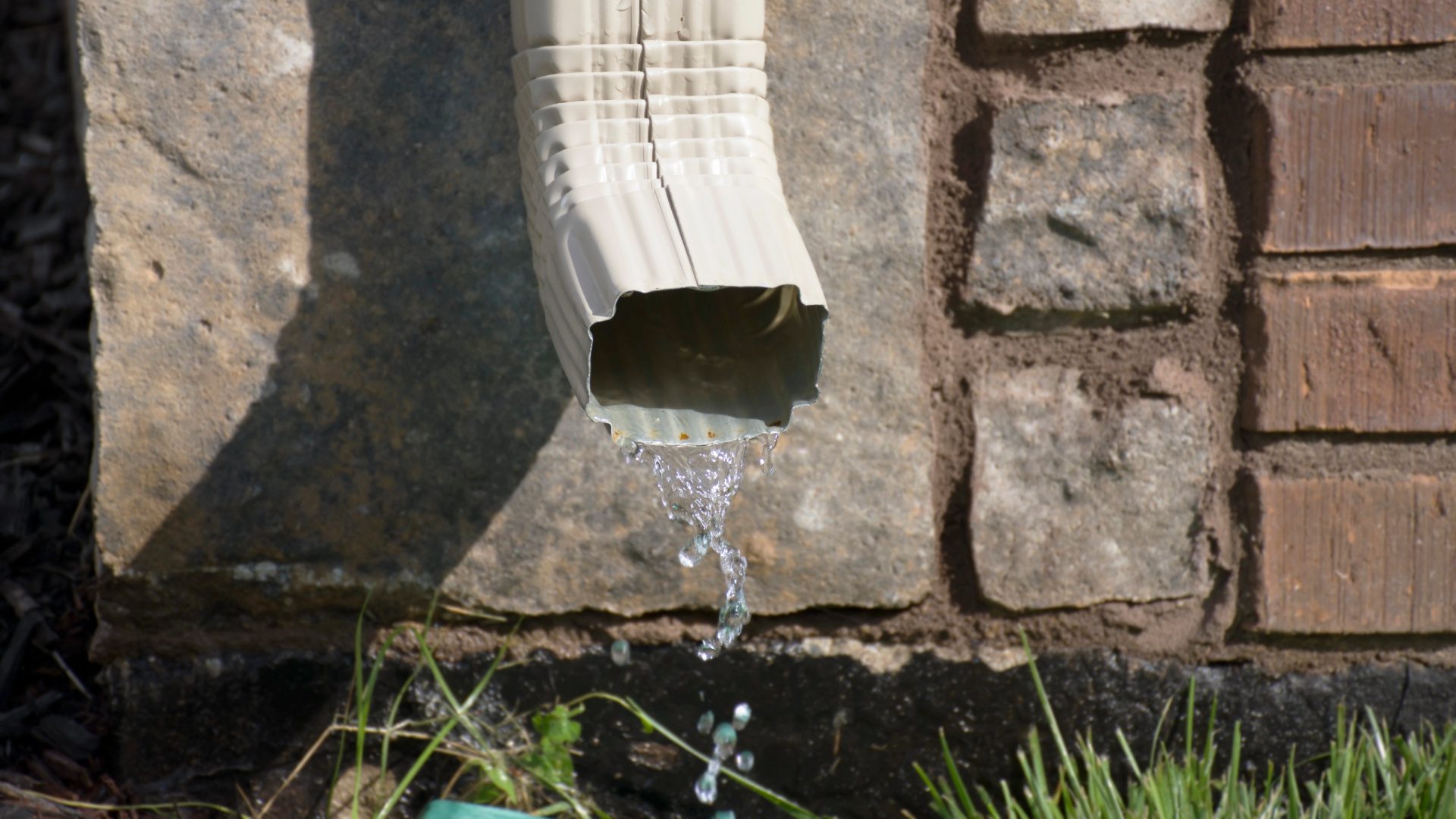
🌊 Downspout Disasters: Directing Water Where It Should Go
Think of downspouts as the final stretch of a water slide – if they’re not positioned right, you’ll end up with a splash zone where you least want it.
Routing Water Away Safely
Make sure downspouts extend at least 3-5 feet away from your foundation, using extensions if necessary. Check that downspouts are securely attached to the main gutter and that all sections fit tightly together. Replace any crushed or damaged pipe sections.
For persistent clogs in downspouts, consider installing downspout strainers at the top to prevent debris from entering while allowing water to flow. These simple devices can save you hours of maintenance in the long run.
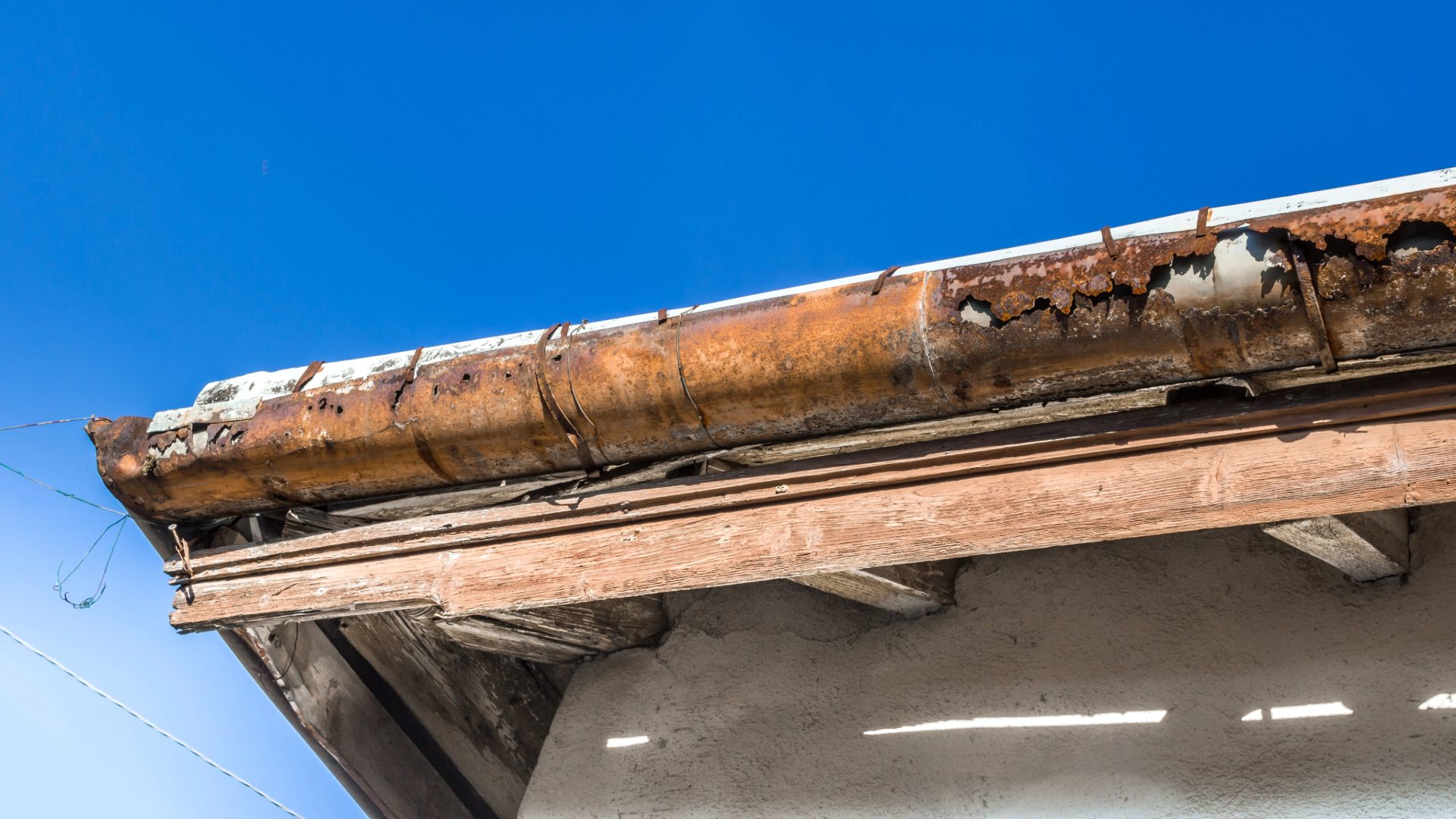
🔧 Rust: The Silent Killer
Rust on your gutters is like termites in your framing – by the time you notice the problem, significant damage has already been done.
Spotting and Stopping Rust
Catch rust early by looking for orange or brown discoloration, bubbling or flaking paint, and rough surfaces.
For minor rust:
- Scrub with a wire brush to remove loose rust
- Clean thoroughly and allow to dry
- Apply rust-inhibiting primer
- Finish with paint that matches your existing color
Extensive rust often indicates it’s time for a complete system replacement, especially if there are multiple rusty sections or structural weaknesses.

🛡️ Protection Systems: The Prevention Conversation
Imagine a world where your gutters don’t become the neighborhood leaf collection service – that’s what proper protective systems can offer.
Options range from simple screens to sophisticated systems with fine mesh. While they represent an additional expense, quality protection can significantly reduce the need for maintenance and extend the life of your gutter system.
No protection system eliminates maintenance entirely, but they can dramatically reduce the frequency of cleaning and prevent many common problems.
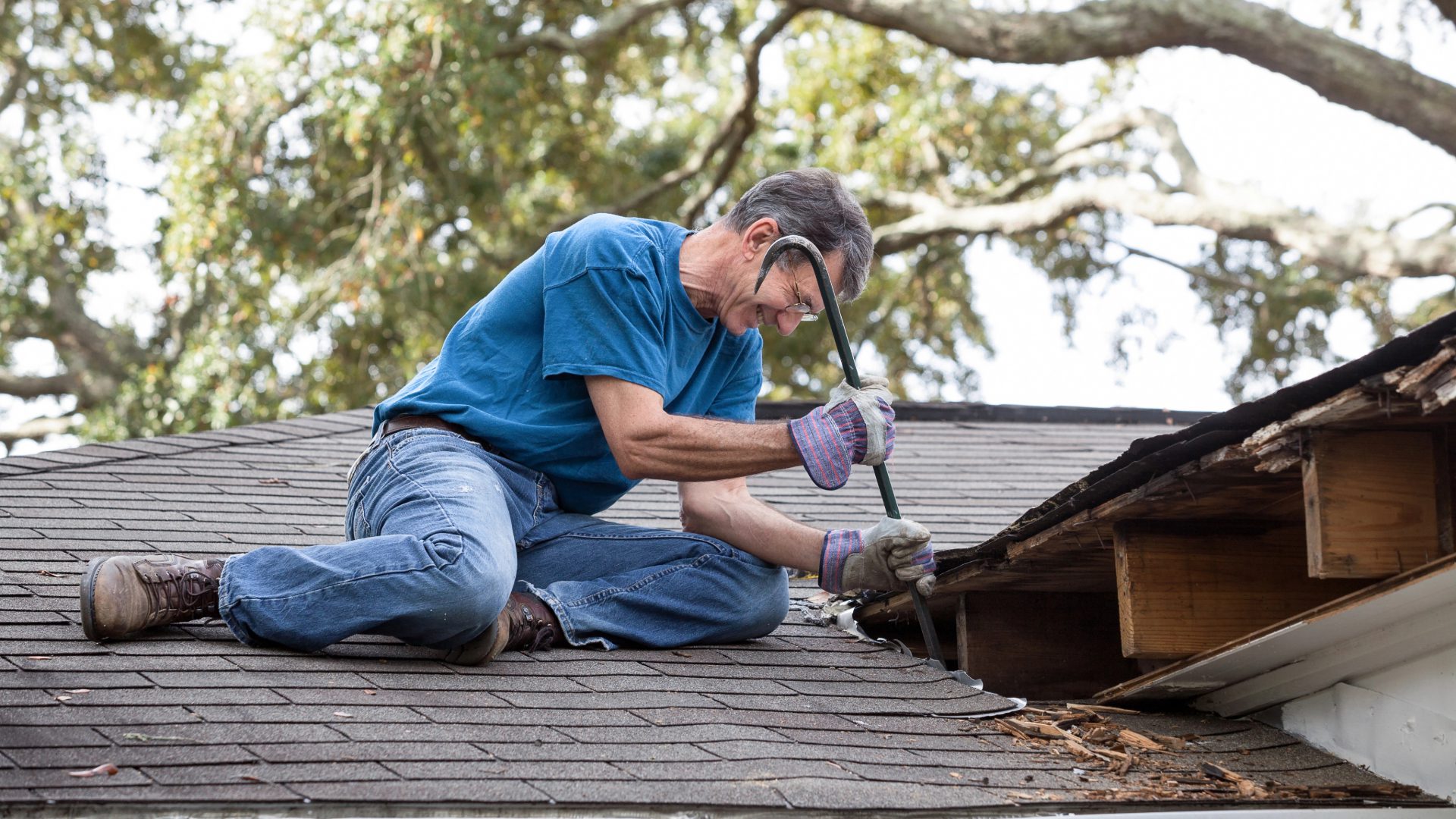
🏠 The Roof Connection: How Gutters Affect Your Shingles
Your roof and gutters need to work together like a well-rehearsed dance team – when one partner misses a step, the whole performance suffers.
Check that the front lip of the gutter sits slightly under the edge of the roof, using a gutter apron if necessary to direct water properly. Ensure the drip edge extends into the gutter to prevent water and debris from reaching the fascia board.
This connection point requires special attention during both gutter and roof projects, as changes to one can affect the performance of the other.
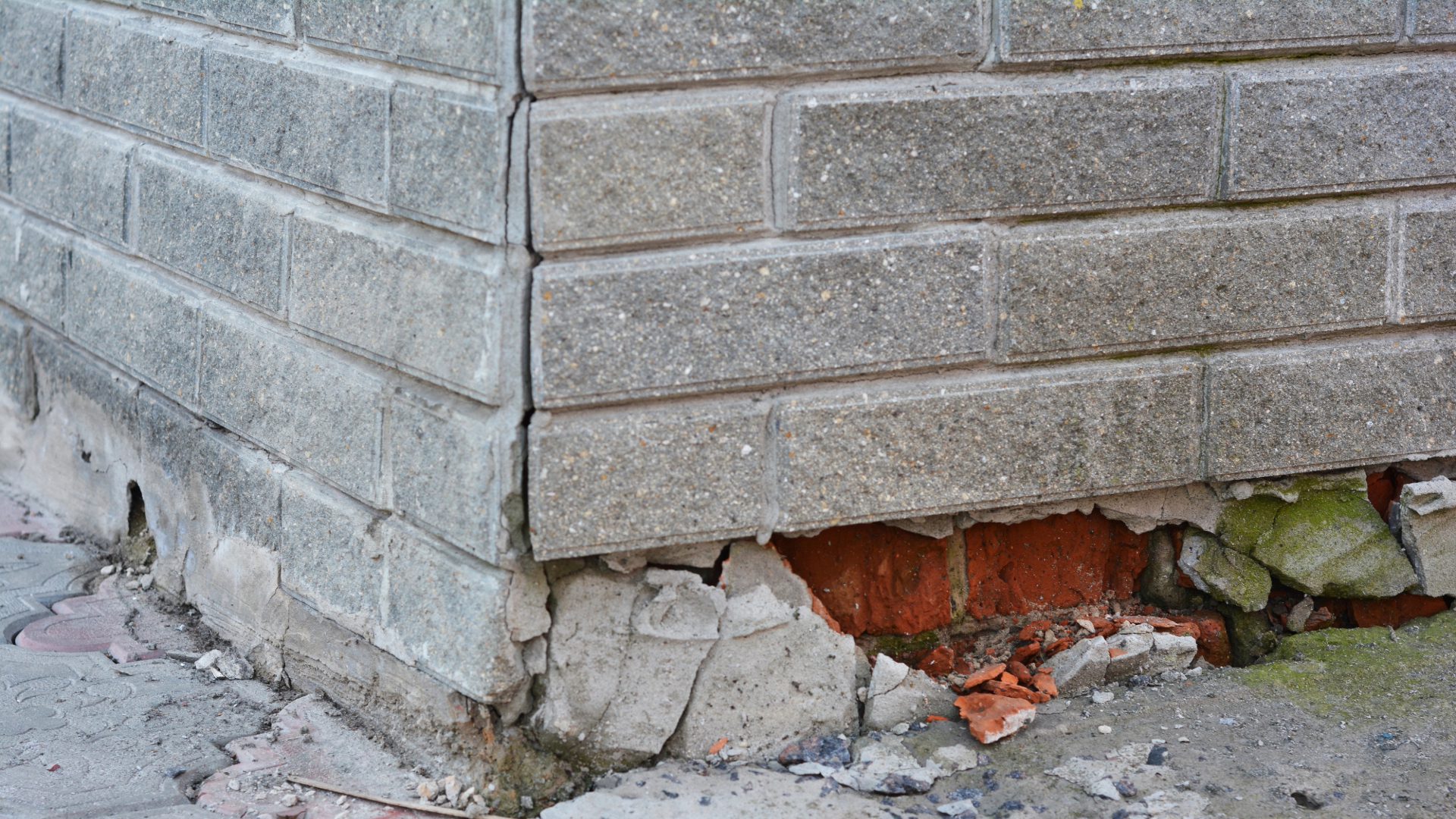
🏗️ The Foundation Factor: Protecting Your Biggest Investment
Your home’s foundation has one archenemy – water – and your gutter system is the superhero designed to keep them apart.
Check that downspouts direct water at least 3-5 feet from your foundation. Areas with poor drainage may need extensions or underground drain pipes to carry water further from the house.
Signs of foundation issues related to poor drainage include:
- Cracks in foundation walls
- Damp basement corners
- Mold or mildew growth
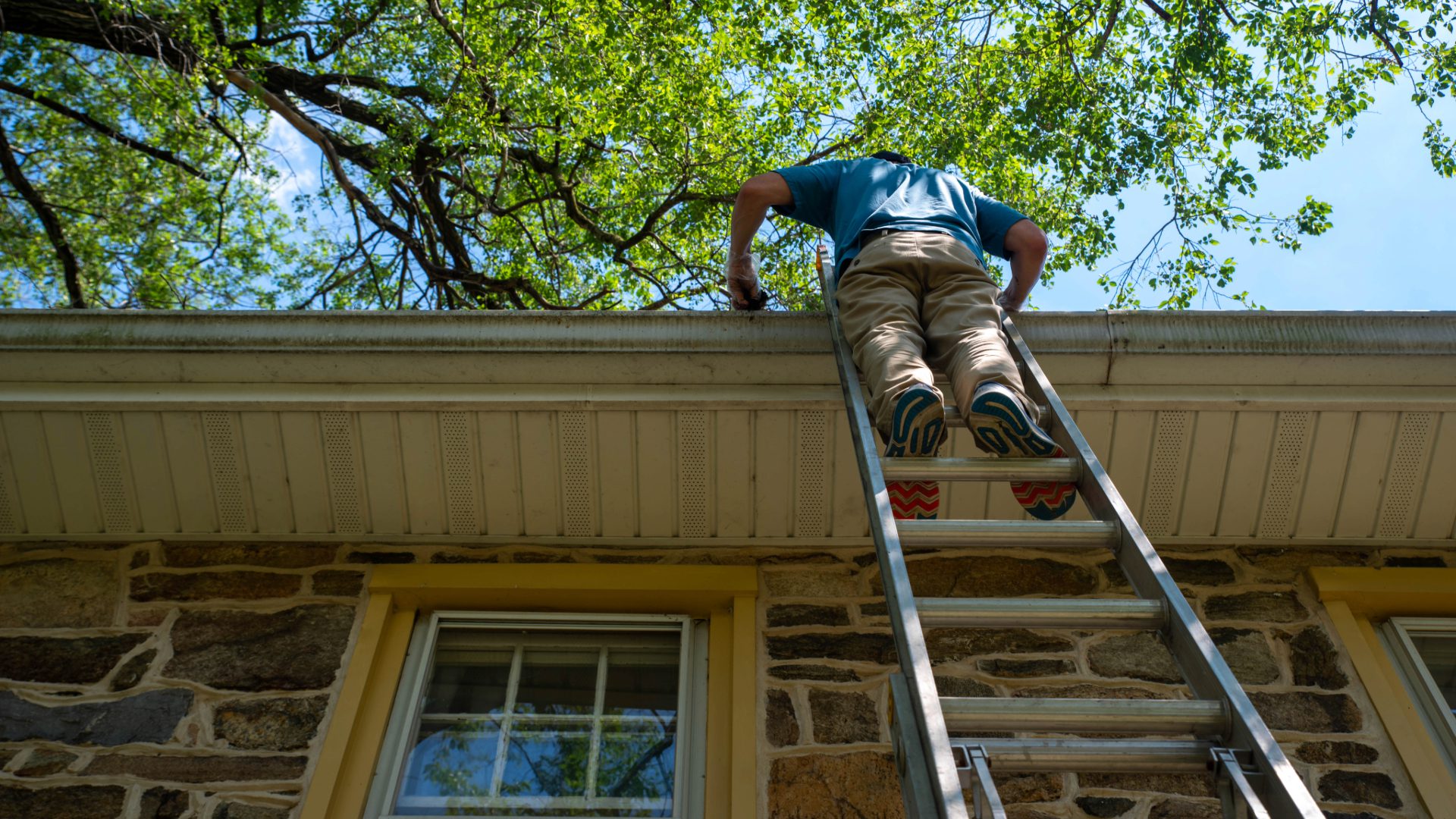
🏳️ When DIY Just Won’t Cut It: Knowing When to Call The Pros
There comes a moment in every homeowner’s life when they need to look in the mirror and ask: “Is balancing on a ladder while handling metal cutting tools really the best use of my Saturday?”
Consider professional services when:
- Your home is more than one story high
- Work involves fascia or roof issues beyond simple gutter problems
- You discover significant water damage behind gutters or cracks near downspouts
- Large sections need replacement
- Multiple attempts haven’t solved the problem
A professional service can typically handle the work in a few hours, but it may take you an entire weekend or more.
💰 The True Cost: DIY vs. Professional Solutions
When comparing DIY work to professional services, remember that the sticker price is just the beginning of the story.
The DIY Price Tag: Minor work typically starts at $100-$250 in materials, plus tools, multiple hardware store trips, your valuable weekend time, and the potential cost of redoing work.
The Professional Advantage: Professional services usually charge $150-$400 for simple repairs.
What you get with professionals: Work completed in a fraction of the time, proper materials and techniques, identification of hidden problems, and warranty coverage.
Perhaps most importantly, deferred maintenance almost always costs more in the long run when water damage is factored in.
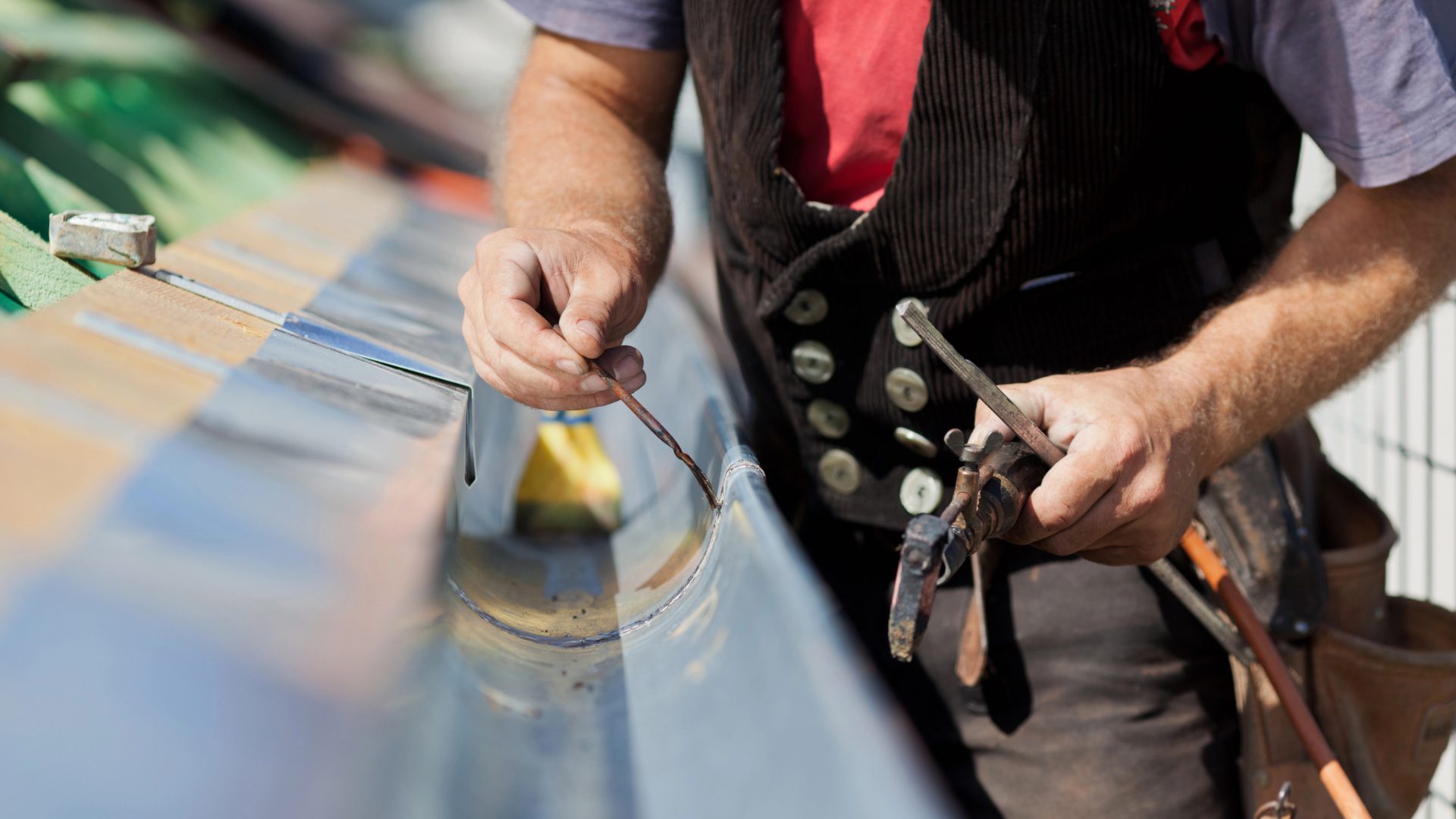
🏆 Peace of Mind Flows Like Water
Well-maintained gutters silently protect your home year after year. They may not be glamorous, but they’re essential to preserving your home’s structural integrity and value.
The real question is: how much is your time, safety, and the structural integrity of your home worth? While DIY work might seem cost-effective initially, professional services offer expertise, efficiency, and lasting results that often prove more economical in the long run.
Let the Pros Handle Your System
You dread spending your weekend perched precariously on a ladder while your neighbors enjoy backyard BBQs, right? That’s what we’re here for!
Since 1965, Leach Construction has been helping Michigan homeowners protect their properties from everything our weather throws their way. Our team can tackle your gutter issues using professional-grade materials that stand up to Michigan’s brutal winters and summer storms.
Contact us today for a free assessment, and reclaim your weekends while protecting your home’s foundation for years to come!

